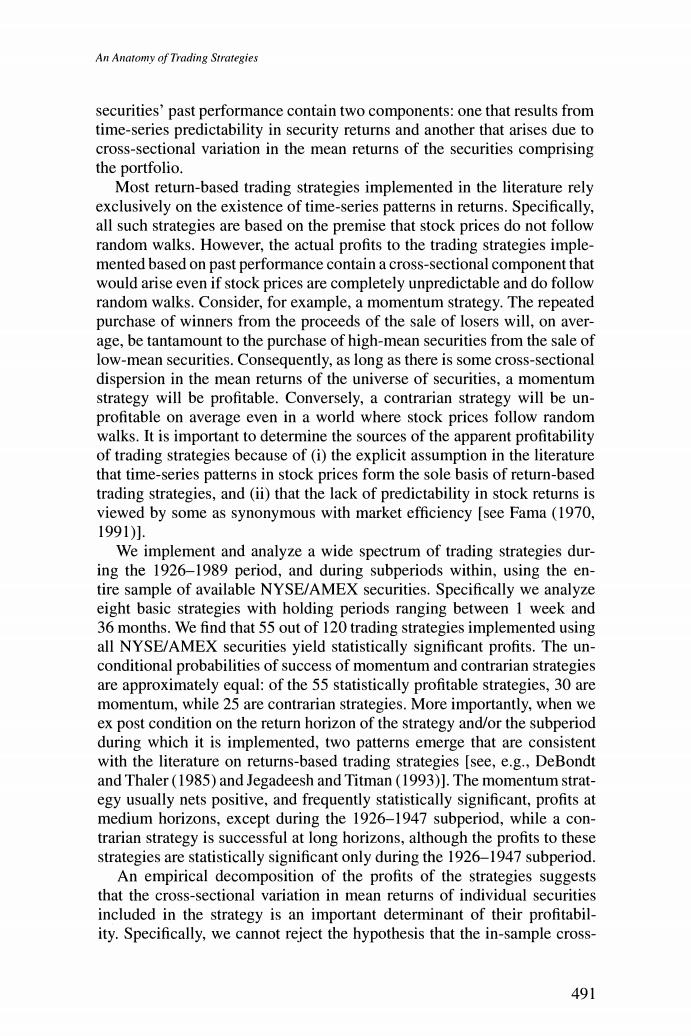正在加载图片...

An Anatomy of Trading Strategies securities'past performance contain two components:one that results from time-series predictability in security returns and another that arises due to cross-sectional variation in the mean returns of the securities comprising the portfolio. Most return-based trading strategies implemented in the literature rely exclusively on the existence of time-series patterns in returns.Specifically, all such strategies are based on the premise that stock prices do not follow random walks.However,the actual profits to the trading strategies imple- mented based on past performance contain a cross-sectional component that would arise even if stock prices are completely unpredictable and do follow random walks.Consider,for example,a momentum strategy.The repeated purchase of winners from the proceeds of the sale of losers will,on aver- age,be tantamount to the purchase of high-mean securities from the sale of low-mean securities.Consequently,as long as there is some cross-sectional dispersion in the mean returns of the universe of securities,a momentum strategy will be profitable.Conversely,a contrarian strategy will be un- profitable on average even in a world where stock prices follow random walks.It is important to determine the sources of the apparent profitability of trading strategies because of (i)the explicit assumption in the literature that time-series patterns in stock prices form the sole basis of return-based trading strategies,and (ii)that the lack of predictability in stock returns is viewed by some as synonymous with market efficiency [see Fama(1970, 1991)] We implement and analyze a wide spectrum of trading strategies dur- ing the 1926-1989 period,and during subperiods within,using the en- tire sample of available NYSE/AMEX securities.Specifically we analyze eight basic strategies with holding periods ranging between I week and 36 months.We find that 55 out of 120 trading strategies implemented using all NYSE/AMEX securities yield statistically significant profits.The un- conditional probabilities of success of momentum and contrarian strategies are approximately equal:of the 55 statistically profitable strategies,30 are momentum,while 25 are contrarian strategies.More importantly,when we ex post condition on the return horizon of the strategy and/or the subperiod during which it is implemented,two patterns emerge that are consistent with the literature on returns-based trading strategies [see,e.g.,DeBondt and Thaler (1985)and Jegadeesh and Titman (1993)].The momentum strat- egy usually nets positive,and frequently statistically significant,profits at medium horizons,except during the 1926-1947 subperiod,while a con- trarian strategy is successful at long horizons,although the profits to these strategies are statistically significant only during the 1926-1947 subperiod. An empirical decomposition of the profits of the strategies suggests that the cross-sectional variation in mean returns of individual securities included in the strategy is an important determinant of their profitabil- ity.Specifically,we cannot reject the hypothesis that the in-sample cross- 491